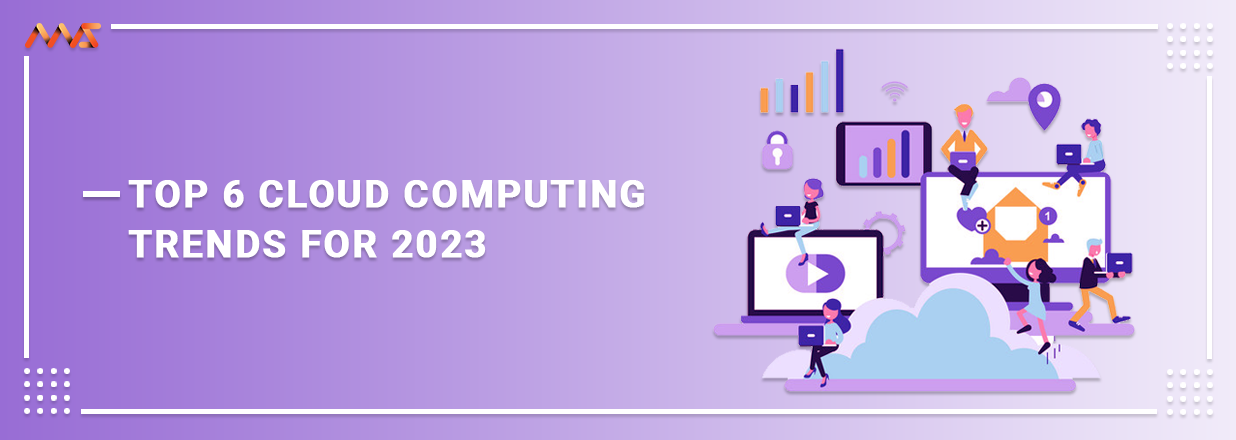According to Serve, the market for public cloud services in India will increase by 30% from 2022 to $706 billion by the end of 2022. The epidemic of the previous one year made remote working possibilities feasible, forcing every company to embrace cloud platforms like never before. It paved the way for companies to use cloud technologies for greater flexibility in these uncertain times.
According to IDC (Institutional Development Cell) serve 2025, global spending on cloud computing services will have increased to $1.3 trillion from its current $706 billion level.
“Cloud computing is becoming a requirement for every organization seeking increased future scalability, cost reduction, and business continuity.”
Multi And Hybrid Cloud Development
By the start of 2022, more than 75% of midsize and large businesses would need to have implemented a multi-cloud or hybrid IT strategy, according to Gartner's predictions. According to the survey, more than 91% of businesses will choose a hybrid solution architecture in 2022, which mixes on-premise, dedicated private clouds, some public clouds, and legacy platforms.
The explanation is that companies now recognise that data management requires combining many suitable cloud deployment tactics rather than depending exclusively on one cloud platform or architecture. To get the most out of each solution, many companies will seek to install hybrid or multi-cloud in 2023 with more than one vendor. A hybrid cloud architecture provides a blend of public and private clouds specialised to a particular industry, such as insurance, banks, etc., whose data is their core business driver. As a result, Multi and Hybrid Cloud Deployment will be one of the most popular trends in cloud computing in 2023 and the years to come.
Applications Built for the Cloud
A growing number of enterprises are utilising cloud-native apps. These programmes are built to be resilient while withstanding significant changes. Additionally, they enable businesses to develop, roll out, and manage cloud apps more quickly.
Businesses can constantly alter, add features, and improve cloud-native apps for better user and customer experiences. Cloud-native app management is easy, requires fewer resources, and involves vendor involvement. Infrastructure standardisation has led to a considerable reduction in IT costs. By utilising cloud-native apps, businesses may increase flexibility, adaptability, and client focus. They serve as a centre for the modern IT industry as a result. A recent survey by Capgemini, which discovered that 34% of all new enterprise IT apps are cloud-native, supports this.
The Cloud Powered by AI and ML
Cloud services for artificial intelligence (AI) and machine learning (ML) are available because of the restricted resources available to organisations to construct their own AI infrastructure. Data collection and algorithm training require large amounts of computing and storage space and renting these resources as a service is often more economical. Cloud service providers are increasingly utilising AI internally for a range of uses. This entails managing the massive, scattered networks necessary to supply their clients with storage resources, operating the cooling and energy systems in data centres, and offering the cyber security technologies that safeguard their data.
Cloud services with no coding
Tools and platforms that enable anyone to build apps and use data to solve problems without writing computer code are of interest to people. Programs for building websites, web applications, and nearly any other kind of digital product a company desires are included in this set of low-code and no-code solutions. The availability of low-code and no-code solutions has thus significantly lowered the entry barriers for businesses wishing to adopt AI and ML, making it a cloud computing trend of 2023.
IOT (Internet Of Things)
One of the most well-known upcoming topics in cloud computing is IoT. It is a technique that keeps networks, servers, and computers connected. IoT serves as a mediator, facilitating effective communication and helping to gather data from remote devices for effective operations. It also offers support in many other areas, such as resolving alerts and assisting with the security policies put in place by companies to ensure a safer cloud environment.
Blockchain
A tamper-proof digital ledger that can store data without relying on a centralized authority is made possible by blockchain technology. Despite being a game-changer, blockchain has scalability problems, especially when managing and storing massive volumes of data. However, because it is a perfect fit, companies will keep pushing the limits of blockchain in 2023. The use of blockchains and the components that build them up may be one of the most powerfull advances in cloud computing.
Takeaway
The wave of cloud adoption has reached its peak since the epidemic started and will keep growing through 2023. Organizations can use the cloud to upgrade and upscale existing digital products and expand their cloud capabilities. By the end of 2022, the "cloud-first" approach will have already supplanted the "purpose-fit for the cloud" approach. Businesses' enthusiasm for innovation and commitment to lifelong learning will play an important role in 2023 in mastering the cloud solution. Like anything else, these trends in cloud computing will alter as usage increases. If you follow these trends, your business can utilize the best cloud solution.
Martvalley services provide cloud computing services, including data management, hybrid & multi-cloud, and AI & ML. You can face your business difficulties head-on with data-driven solutions that maximise efficiencies and increase scalability. Our skilled team of cloud application developers assists you in getting the most out of Google's dependable, scalable infrastructure. -: To More Information About Cloud services Please Click Here


